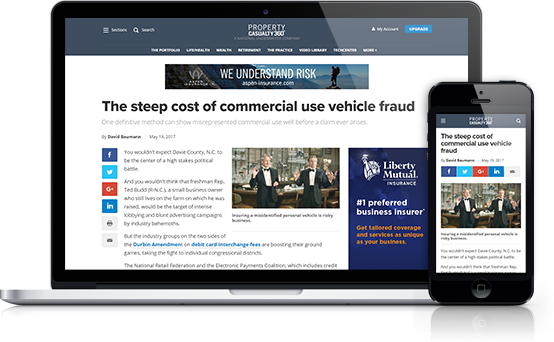Home ownership has been a long-standing dream for many Americans, but the convergence of various events and developments over the last few years has made it harder to keep that dream from turning into a nightmare. For example, more intense extreme-weather events and other natural disasters, such as Superstorm Sandy, California wildfires and tornados in the Plains and Midwest, highlight the potential daunting expenses of rebuilding or repairing the dream should the worst happen.
Such nightmares are not just haunting homeowners. As the climate continues to change, the challenges of finding a way to deal with increasing storm severity is readily apparent to insurers as well. According to Verisk subsidiary AIR Worldwide, since 1990, annual aggregate losses caused by severe thunderstorms in the United States on average are responsible for more than half of all insured catastrophe losses. In 2011 alone, thunderstorm events cost the industry $25 billion—a high price for the cost of doing business. The continuing trend makes it more important than ever for homeowners to be vigilant about maintaining their dream homes and property—ensuring roofs are sealed, gutters are clear and in good condition, and trees are healthy and pruned as a defense against strong winds that could have a devastating effect on a house after a severe storm.
The responsibility associated with properly maintaining the dream can be particularly burdensome during tough economic times. And while the most recent economic downturn has improved somewhat, times remain tough for many as evidenced in the ongoing neglect of regular repairs and maintenance by some homeowners. Examples of such neglect include:
|- Putting off the purchase of replacement windows and new appliances if the old ones "still get the job done," no matter how poorly. Postponing the purchase of home improvement upgrades is something some homeowners simply should not do but may not be able to avoid.
- Not hiring contractors to do regular inspections and service because of monetary constraints might leave the homeowner unaware of looming problems such neglect can create. For example, insureds don't generally check their washing machine hookups and other appliances for leaks or corrosion. It makes sense to inspect a boiler and water heater regularly, but many homeowners overlook such tasks.
- Failing to recognize that changes in the way we live and build our homes, and not just the needs of older homes, also present risk. A basement washing machine that develops a leak may cause some damage. But the same appliance located on a home's second floor can damage carpets, furniture, electronics, wallboard and wood flooring throughout the house if connections break while the homeowner is away. Add the additional living expenses incurred during the course of repair, and the loss can be extensive.
In addition to the strain on repairs and maintenance, the economic downturn precipitated other consequences. For example, the percentage of millennials moving back in with their parents because of financial hardship is 17 points higher than was the case for their Gen X counterparts, according to a recent survey by salary data company Payscale. This "return to the nest" phenomenon itself can present potential new exposures and can alter Millennial parents' homeowners risk profiles.
Recommended For You
Want to continue reading?
Become a Free PropertyCasualty360 Digital Reader
Your access to unlimited PropertyCasualty360 content isn’t changing.
Once you are an ALM digital member, you’ll receive:
- Breaking insurance news and analysis, on-site and via our newsletters and custom alerts
- Weekly Insurance Speak podcast featuring exclusive interviews with industry leaders
- Educational webcasts, white papers, and ebooks from industry thought leaders
- Critical converage of the employee benefits and financial advisory markets on our other ALM sites, BenefitsPRO and ThinkAdvisor
Already have an account? Sign In Now
© Touchpoint Markets, All Rights Reserved. Request academic re-use from www.copyright.com. All other uses, submit a request to [email protected]. For more inforrmation visit Asset & Logo Licensing.







